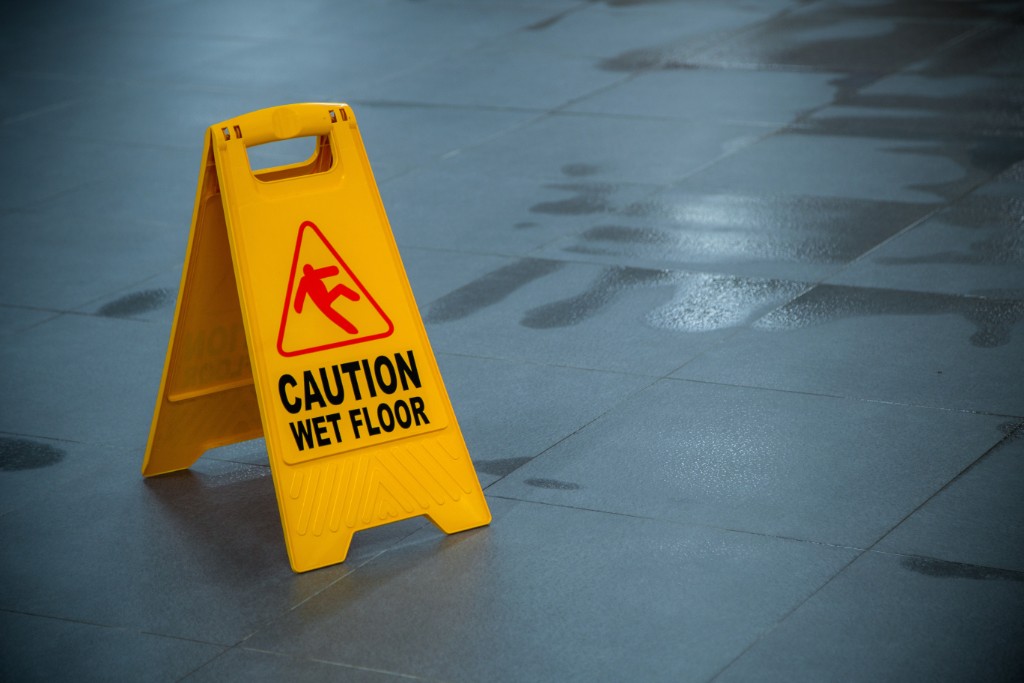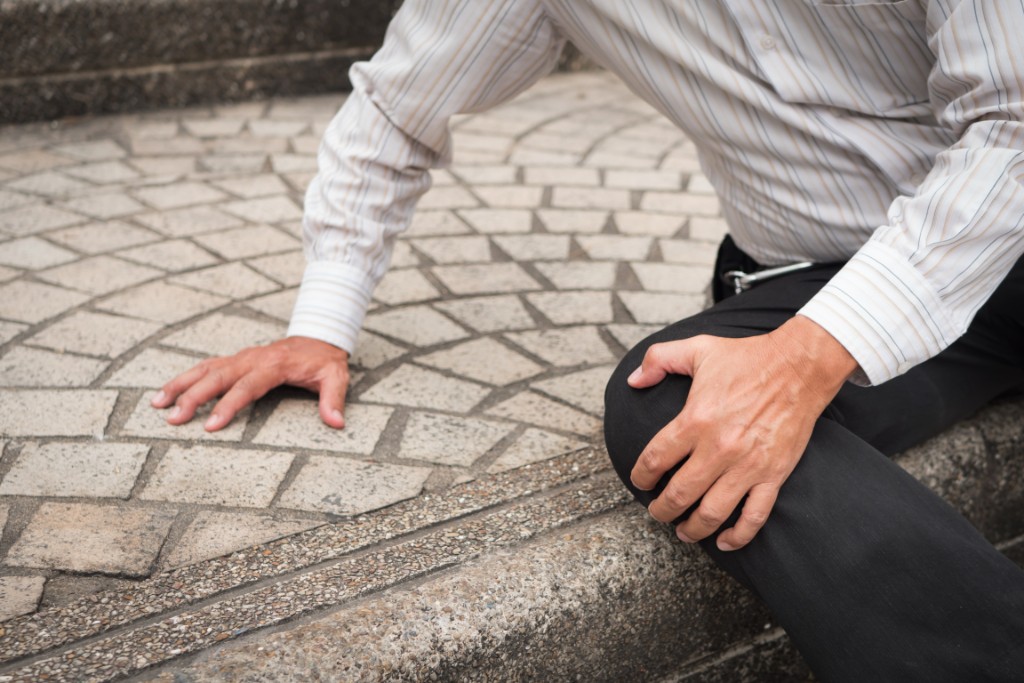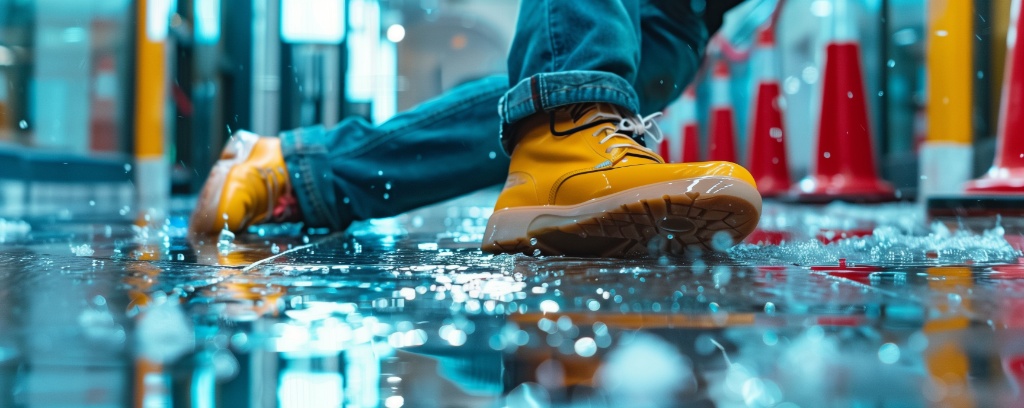December 7, 2023 | slip and fall accident Claims
Slip and Fall Claims on Commercial Properties – What is needed to prove liability?
Table of Contents
The legal intricacies surrounding slip and fall claims on ice and/or snow can be challenging to any lawsuit. Failing to appreciate the law and facts can be detrimental to the outcome of any claim.
At Preszler Injury Lawyers, our lawyers are highly skilled and equipped to effectively represent anyone who has suffered an injury due to a slip and fall. We have successfully represented thousands of victims of slip and falls by conducting a comprehensive analysis of the facts and having a thorough appreciation of the laws governing slip and fall claims in Ontario.
Most insurers attempt to avoid fault for a slip and fall by claiming their insured followed a reasonable system of inspection and winter maintenance in safeguarding the property from dangerous weather conditions. Alternatively, they offset blame onto a third-party contractor they hired to perform the necessary winter maintenance responsibilities, such as plowing and relocating snow and applying salt.
This responsibility falls on the occupier of the premises. This is determined by Section 1(b) of the Occupiers’ Liability Act R.S.O. 1990, c. O.2 (the “OLA”). It states that an occupier is “a person who has responsibility for and control over the condition of premises or the activities there carried on…”.
The occupier’s duty of care is described in Section 3(1) of the OLA, as follows:
Occupier’s Duty
3(1) An occupier of premises owes a duty to take such care as in all the circumstances of the case is reasonable to see that persons entering on the premises, and the property brought on the premises by those persons are reasonably safe while on the premises.
Idem
(2) The duty of care provided for in subsection (1) applies whether the danger is caused by the condition of the premises or by an activity carried out on the premises.
The level of responsibility varies between commercial and residential properties. Commercial properties are often held to a higher standard of care than private residential homes as they are open to the public, set up for the purposes of profit and commercial venture and attract more foot traffic.
Examples of commercial properties include shopping malls, hospitals, grocery stores, commercial plazas, as well as apartment buildings and condominiums.
To avoid blame, an occupier of a commercial premises will be required to demonstrate their efforts through evidence: oral, documentary, or otherwise. This often takes the form of log notes, GPS coordinates, witness evidence, weather reports, and photographs/videos, to name a few.
- Log Notes: These are essential in proving not only whether any winter maintenance was carried out, but also when it started/ended, what type of maintenance was provided (plowing/salting/sanding), and to what sections of the property. They often contain detailed observations of the weather and temperature at the time, which is valuable information in any slip-and-fall claim.
- GPS Coordinates: Winter maintenance providers can claim they were at a property at a certain time and day but may not be able to prove it. By obtaining the GPS coordinates, you can determine the exact time and duration the winter maintenance provider was on the scene of a fall on any date.
- Witness Evidence: As in any lawsuit, witness evidence is invaluable. It can provide independent details of an accident, but in slip and fall claims, can also corroborate the condition of a property and whether any maintenance was performed, which can be compelling.
- Weather Reports: This is an effective tool for tracking weather patterns. They contain details including the temperatures throughout the day, the type and amount of precipitation that fell on a given day, and even hour by hour. Knowing the details of the weather not only on the day of the fall but in the days leading up to it can assist in appreciating whether a winter maintenance provider acted appropriately in the circumstances.
- Photographs/Videos: A picture is worth a thousand words, and a video is worth even more. Timely documentation of a slip and fall location can confirm with a high level of certainty what the premises looked like at the time of a fall and will likely reflect whether any winter maintenance had been conducted, and if so, to what degree.
Musa v. Carleton Condominium Corporation No. 255, 2023 ONCA 605
In Musa, the Plaintiff slipped on ice and fractured his ankle on a slippery roadway outside his condominium while walking to his car. At the time, the roadway had been plowed, but not yet salted. The Plaintiff sued two companies, including Carleton Condominium Corp (property owners), as well as the snow removal contractor they hired to perform winter maintenance to the property, Exact Post Ottawa Inc.
The contract between the parties assisted in confirming that Exact Post had exclusive responsibility for the winter maintenance of the premises. For all intents and purposes, Exact Post was deemed to be the occupier of the incident location as specified in the OLA.
Standard Of Care
It is widely accepted that occupiers are not held to a standard of perfection, meaning they are not required to expel every spec of ice and snow from a property. Rather, they are held to a standard of reasonableness when it comes to determining whether they sufficiently discharged their duty of care. Consideration is given to whether the occupier had a reasonable system in place to ensure safety, and whether the system was properly functioning on the date of the accident.
As in Musa, slip and fall claims are highly fact-driven, requiring analysis of all relevant factors. This analysis includes the weather, time of the year, size and nature of the property, the quality/type of footwear worn by the Plaintiff, alternative routes available and consideration of contractual obligations, among others.
Timely Salt Application
Much of the Court’s focus in Musa was centered around whether the contractor applied salt in a proper and timely fashion on the date of the fall. The understanding is that a timely salt application is a highly effective measure taken to safeguard a property from slippery conditions.
Routinely, winter maintenance contractors will plow a property by clearing the base layer of snow from the ground. This method often results in a thin layer of snow being left behind, which is susceptible to freezing over. For this reason, the Courts maintain that plowing should be immediately followed by an application of salt to prevent or minimize the formation of an icy surface. To be effective, however, the timing of the salt application is critical.
The following factors were considered in Musa to determine whether Exact Post acted reasonably in carrying out their winter maintenance duties:
- Snow began falling around 4:00am and continued until about 2:00pm, resulting in approximately 12 cm of snowfall;
- Temperatures were mild, and just below freezing;
- Exact Post arrived on scene at 7:30am, and spent 2.5 hours plowing snow;
- The Plaintiff slipped and fell just after 9:30am;
- Exact Post spent 10 minutes salting before leaving the property at 11:00am.
The Court found ice-formation was readily foreseeable given the weather conditions and that demanded a timely application of salt. While pre-salting is available, the Court confirmed that salt applied concurrently with or immediately after plowing is effective in preventing the ice/pavement bond from setting in.
Exact Posts application of salt within 2 hours after plowing was held to be unreasonable in the circumstances. The Trial Judge found this delay fell below the acceptable standard of care expected of a commercial winter maintenance contractor. The failure to salt the premises in a timely manner caused a dangerous icy surface to form in the parking lot, which was found to be the proximate cause of the Plaintiff’s injuries. For these reasons, Exact Post was found to be at fault for Plaintiff’s injuries.
Takeaways:
- Musa serves as a reminder that a reasonable system of inspection requires adherence to that system, including timely compliance to prevent and/or minimize the presence of slippery surfaces;
- While pre-salting is an effective proactive measure in reducing the formation of ice, Musa clarifies that it is not an industry standard nor is it a mandatory requirement;
- Timely salt application is mandatory in reducing the formation of ice; and
- Compensation can be reduced if a Plaintiff fails to wear appropriate footwear or if they fail to take proper precautions given the slippery conditions.
Remember, all slip and fall claims caused by snow and ice require that written notice be given to the occupier or independent contractor within 60 days of the fall. Written notice must be personally served or sent by registered mail. The written notice requires the date, time and location of fall. Don’t wait to contract Preszler Injury Lawyers.For a free consultation, call 1-800-JUSTICE.
Blog Categories
More slip and fall accident Topics
Here’s more information on slip and fall accident related topics that we think you might find helpful.

slip and fall accident
|
May 16, 2023
Slip and Fall Accidents and Wet Floor Signs: Details Matter
The last thing anyone wants is to slip and fall in a public place and hurt themselves. Plaintiffs in personal injury cases have no control…

slip and fall accident
|
May 5, 2023
Occupiers’ Liability Amendment Act, 2020: Injured Ontarians Who Hesitate Are Lost
Bill 118, also known as the Occupiers’ Liability Amendment Act, 2020, was introduced by Ontario’s Progressive Conservative government. It received royal assent on December 8,…

slip and fall accident
|
April 20, 2021
Hazards That May Cause Slip and Fall Accidents
Although it may not appear so to the unsuspecting eye, hazards that could lead to slip and fall accidents exist all around us. Slip and…
